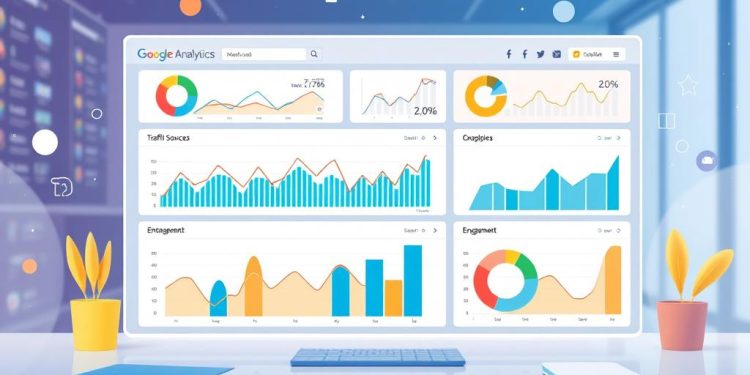As we approach 2025, the world of AI in Analytics is undergoing a remarkable transformation. The advancements in artificial intelligence are not just passing fads; they are reshaping how you and your organization analyze data, derive insights, and make critical decisions. With the integration of sophisticated machine learning models, businesses can process vast amounts of data swiftly and accurately. This shift enables the extraction of actionable insights, reducing the need for extensive manual analysis that can be time-consuming and inefficient.
Moreover, the capability of AI to streamline data automation presents you with exciting opportunities to enhance operational efficiency. As companies like Databricks and Google Cloud invest heavily in analytics tools and methodologies that leverage AI technologies, the landscape is evolving rapidly. The seamless integration of these innovations into your core business strategies will define the future of analytics, making it an exciting time to embrace AI.
The Future of AI in Data Analytics
The landscape of data analytics is evolving swiftly, driven by the integration of advanced AI technologies. As we move toward 2025, businesses can expect a transformational shift in how they manage and interpret data. Organizations will increasingly leverage AI-powered analytics tools to streamline decision-making and enhance operational efficiency.
Transformational Effects of AI Technologies
AI technologies are predicted to play a crucial role in the analytics sector. By 2025, 75% of organizations may utilize these tools, leading to a significant 30% boost in efficiency across various industries. The adoption of predictive analytics will likely improve forecasting accuracy by 20-30%. Investigations have shown that 68% of executives believe that AI incorporation can vastly improve decision-making processes, leading to a stronger competitive edge.
Streamlined Data Processing Capabilities
Data automation through AI will help organizations manage complex data sets effortlessly. This shift is projected to reduce processing times by up to 50% as repetitive tasks become automated. A staggering 80% of data analytics tasks may be automated by 2025, allowing skilled analysts to concentrate on complex strategic initiatives rather than mundane tasks. Consequently, organizations can expect an increase in productivity, speed to market, and overall revenue potential.
| Statistic | Projected Impact by 2025 |
|---|---|
| AI-powered analytics tool adoption | 75% of organizations |
| Increase in operational efficiency | 30% |
| Improvement in forecasting accuracy | 20-30% |
| Reduction in data processing time | Up to 50% |
| Automation of analytics tasks | 80% |
Key AI Trends Shaping Analytics Tools in 2025
As we approach 2025, the landscape of analytics tools will witness significant transformations driven by key AI trends. These trends encompass multiple advancements, including generative AI and autonomous AI agents, both of which have substantial implications for business applications.
Generative AI and Its Business Applications
Generative AI stands as a remarkable force in the realm of business applications. Its ability to produce hyper-personalized content allows companies to engage customers on a deeper level. Current tools, like OpenAI’s advances in generative AI, are already revolutionizing content creation and user experience. Businesses leveraging these innovations can see improved customer satisfaction and retention rates as they provide tailored solutions for individual needs. Moreover, generative AI enhances operational efficiency by streamlining processes in industries such as marketing and health care. This technology supports improvements in diagnostics and treatment personalization while significantly reducing timeframes in drug discovery, showcasing its versatility across sectors.
Rise of Autonomous AI Agents
The emergence of autonomous AI agents marks a critical shift in how businesses operate. These agents are designed to learn and make decisions independently, significantly reducing the need for human oversight. This autonomy leads to improved workflows and productivity as tasks that once required extensive management can now be efficiently handled by these systems. Industries from healthcare to manufacturing are witnessing the benefits of implementing autonomous AI, with tasks being completed faster and with greater accuracy. For example, the deployment of these agents in crime detection systems and customer service roles demonstrates their capability to enhance response times and improve overall service delivery, making them integral to future AI trends.
AI in Analytics: Enhancing Predictive Insights
As you navigate the landscape of business analytics, understanding the evolution of predictive models becomes vital. AI has fundamentally changed how organizations perceive data, creating opportunities for insight-driven planning. Utilizing predictive analytics alongside machine learning technologies shifts the focus from reactive to proactive strategies, allowing you to anticipate market movements and customer behaviors effectively.
The Evolution of Predictive Models
In recent years, predictive analytics has emerged as a powerful tool, blending historical data with advanced algorithms to forecast future outcomes. Machine learning facilitates this by learning patterns from extensive datasets, whether they encompass sales figures, sensor data, or customer interactions. The effectiveness of these predictive models hinges on data quality; robust, high-quality information enhances prediction accuracy significantly.
Consider the industry-wide shift, where approximately 80% of analytics projects are predicted to feature AI by 2025. This integration showcases the rapid advancement in analytical capabilities. For instance, companies leveraging AI-driven predictive analytics report decision-making speed improvements averaging 50%. These enhancements allow businesses to react swiftly, seizing opportunities that arise as consumer trends shift.
Integrating Predictive Analytics into Business Strategies
Integrating predictive analytics into your business strategy is no longer a luxury; it has become essential. For example, in the retail sector, organizations can optimize stock levels based on forecasted demand, reducing inventory costs by an impressive 10-30%. In healthcare, predictive models can forecast patient outcomes, substantially improving treatment planning and potentially cutting costs by up to 20%.
Another notable benefit includes proactive risk management, particularly within finance. AI models can identify potential risks before they escalate, saving organizations up to 15% in costs through timely intervention. Additionally, businesses employing these intelligent tools enhance customer engagement using targeted marketing strategies that utilize real-time data, thus increasing the likelihood of campaign success.
As the demand for professionals skilled in AI analytics grows, with shortages hovering around 40%, organizations face both challenges and opportunities. Companies need to invest in talent development while capitalizing on predictive analytics to maintain a competitive edge in their respective markets. The return on investment for implementing these technologies is compelling, with returns reported between 5:1 to 10:1, making the move toward AI-driven insights not just necessary but beneficial.
Advanced AI Analytics Tools and Their Benefits
The rise of advanced AI analytics tools marks a significant shift in how businesses interact with data. These tools come equipped with features that greatly enhance analytical capabilities, streamlining complex processes and improving user experience. As organizations embrace these innovations, they stand to gain substantial operational efficiencies and leverage advanced analytics for strategic advantage.
Features of Next-Generation AI Analytics Tools
Next-generation AI analytics tools differentiate themselves through a range of features designed to optimize data usage and accessibility.
- Real-Time Data Processing: Crucially important for timely decision-making, these tools help organizations respond rapidly to market changes.
- Intuitive Visualization: User-friendly dashboards make it easier for non-technical users to interpret data insights effectively.
- Automation of Data Management: By automating tasks such as extraction, cleaning, and entry, AI tools free data professionals to focus on in-depth analysis.
- Dynamic Query Response: AI-enabled platforms can adjust to user queries, offering a personalized experience that traditional systems cannot match.
How AI Tools Improve Operational Efficiency
Utilizing AI tools promotes significant operational efficiency across various sectors. Many companies report that the integration of advanced analytics contributes positively to decision-making processes.
- Increased Speed and Accuracy: AI can analyze large datasets quickly, enhancing predictive accuracy and minimizing the potential for human error.
- Higher Predictive Performance: Advanced deep learning models can provide reliable forecasts, enabling better strategic planning.
- Cost and Time Savings: With automation of routine analytics tasks, organizations can save resources and redirect focus to more complex issues.
- Wider Access to Insights: Democratizing data access allows employees without a technical background to gain insights, fostering a data-driven culture throughout the organization.
| Feature | Benefit |
|---|---|
| Real-Time Data Processing | Allows for immediate response to changes in the market |
| Intuitive Visualization | Makes data interpretation accessible to all users |
| Automation | Reduces manual effort, increasing efficiency and reducing errors |
| Dynamic Response to Queries | Enhances user engagement with personalized data retrieval |
Conclusion
As we approach 2025, AI in analytics is proving to be a game-changer for businesses eager to harness the power of their data. The ability to transform raw information into actionable insights not only aligns with evolving market demands but also enables you to craft effective data-driven strategies tailored to your organizational goals. With the rise of generative AI and autonomous agents, the potential for innovation is boundless.
AI techniques enhance decision-making, significantly increasing the speed and accuracy of processing large volumes of structured, unstructured, and semi-structured data. Unlike traditional methods that often struggle with big data, AI tools can automate tasks such as data cleansing and pattern recognition, leading to more accurate insights and faster responses to market changes. Such advanced tools are paramount for any organization striving to maintain a competitive advantage amid ongoing future trends.
To thrive in this data-driven landscape, integrating AI into your analytics strategies is not just an option; it’s essential. By embracing these powerful technologies, you position your business for long-term success, empowering it to make informed decisions, optimize operations, and unlock new opportunities. The path forward is clear: organizations that leverage AI effectively will undoubtedly lead the way into a brighter, data-rich future.







